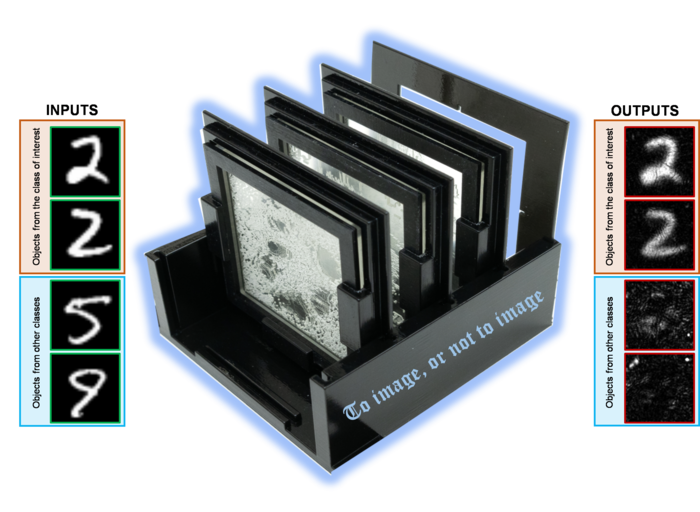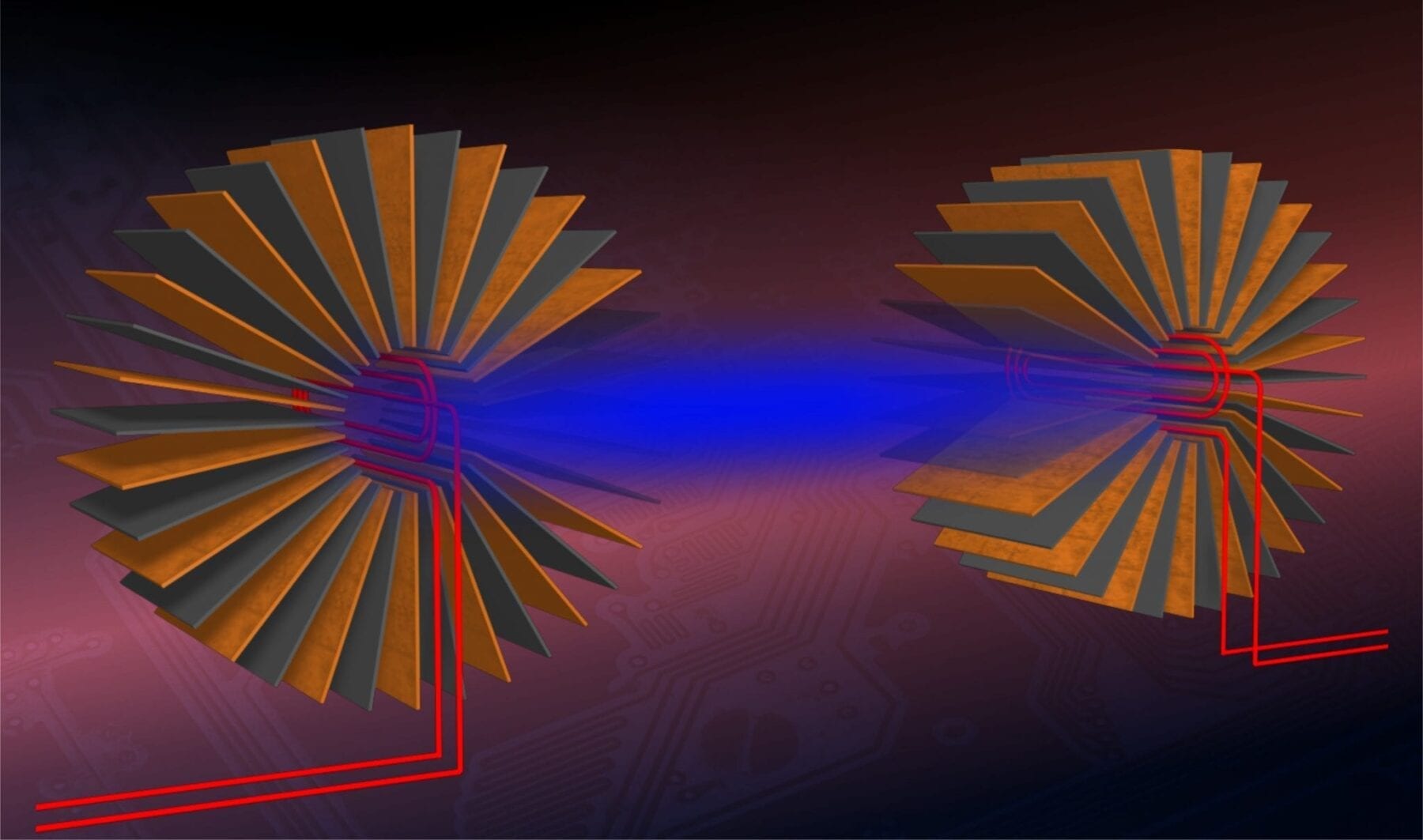
An emotion detector which, potentially, can tell whether a person really finds you attractive on a first date has been created by researchers at Lancaster University.
The inspiration for the device came from a gadget featured in the 1982 sci-fi fantasy film, Blade Runner, starring Harrison Ford and directed by Ridley Scott.
Replicating the Voight-Kampff machine, a fictional interrogation tool, the Lancaster team have created a device that mimics this emotion-detector.
But the plausibly real device is, at this stage, still pure fiction and, while creating it has sparked imaginative design skills and a little fun, it has been built to convey a serious message.
The design team, which includes the Centre for Spatial Analysis (CASA) at UCL, are keen to get people to think about the ethical implications of a world in which we use computers to monitor or even manipulate our emotions.
The polygraph-like Voight-Kampff machine was used by the Blade Runners police force to determine if an individual was a biorobotic android, detected by means of a test in which emotional responses were provoked.
It measured body functions such as blush response, respiration, heart rate and eye movement in response to questions dealing with empathy.
Designers at Lancaster are now researching technologies for their own Voight-Kampff machine including an ear-piece which measures skin and heart rate responses and a pupil-dilation measure.
The team’s fictional speculative device is set against an online dating backdrop and is designed, in theory, to determine if it’s love and sincerity at first sight or sound.
The machine takes on a whole new 21st century appearance – neat, bright and compact – and simply clips onto the bottom of a smartphone or tablet.
The research team, headed by Lancaster University’s design fiction expert Professor Paul Coulton, are set to present a paper on 11 May in San Jose at CHI, the world’s premier conference on Human Factors in Computing Systems, the place to see, discuss and learn about the future of how people interact with technology.
“This machine looks and feels very real and has even prompted a film-making company in the States to request filming us manufacturing the device,” said Professor Coulton. “But this is actually a tool for creating some pretty serious discussions.”
Design fiction is, in broad terms, speculative design which heralds what might come about in the future world of human computer interaction, explains Professor Coulton.
“The factor that differentiates and distinguishes design fiction from other approaches is its novel use of ‘world building’ and, in this paper, we consider whether there is value in creating fictional research worlds through which we might consider future interactions.”
“As an example, we built this world in which rules for detecting empathy will become a major component of future communications. We take inspiration from the sci-fi film ‘Blade Runner’to consider what a plausible world, in which it is useful to build a Voight-Kampff machine, might be like.
“People are working towards this kind of thing,” he added. “What we are doing is questioning whether it has a place in our society – what kind of uses they have and what the world would actually be like with them. We want people to think about the ethical implications of what we do. Technically a lot of this is possible but is it actually what we want?”
The Latest on: Emotion detector
[google_news title=”” keyword=”emotion detector” num_posts=”10″ blurb_length=”0″ show_thumb=”left”]
via Google News
The Latest on: Emotion detector
- Then and Now: Looking back at 150 years of Churchill Downs and the Kentucky Derbyon April 28, 2024 at 2:01 am
The first “Derby Day” on May 17, 1875, looked nothing like the international spectacle that draws hundreds of thousands of people to a storied racetrack rigged out with bars, clubs and ballrooms in ...
- Texas fortified campuses after Uvalde, but gun violence affecting schools continueson April 27, 2024 at 4:00 am
Despite a raft of new security mandates, gun violence continues to hit campuses with schools struggling in their role as a battleground in ...
- Emotion Detection and Recognition (EDR) Market Exploring Perspectives How Focus Groups Illuminate Consumer Realitieson April 25, 2024 at 9:28 pm
Emotion Detection and Recognition (EDR) Market is valued approximately at USD 17.1 billion in 2019 and is anticipated to grow with a healthy growth rate of more than 18% over the forecast period ...
- 'It's not fair': Sister of slain cop makes emotional plea to Chicago residentson April 25, 2024 at 4:16 pm
The sister of slain Chicago police Officer Luis Huesca is pleading with the public to help investigators identify and catch a suspect who allegedly gunned him down.
- NVIDIA-Backed Startup Showcases Super Realistic AI Avatars With Human Emotionson April 25, 2024 at 6:49 am
Synthesia's fourth generation AI avatars are capable of delivering impressive results, without the need for pre-recorded or pre-defined dynamics.
- Watch it and weep (or smile): Synthesia's AI video avatars now feature emotionson April 25, 2024 at 4:47 am
Generative AI has captured the public imagination with a leap into creating elaborate, plausibly real text and imagery out of verbal prompts. Now, Synthesia -- one of the ambitious AI startups working ...
- Life saving story through early detection with Life Guard Imagingon April 24, 2024 at 9:05 am
Former Tampa Bay Buccaneers Player and Life Guard Imaging VP of Business Development Martín Gramática and Tim Lazzaro appeared on the nationally syndicated health & wellness ...
- Revolutionizing Healthcare with AI: Introducing a Breakthrough in Patient Care through Facial Emotion Recognition Technologyon April 23, 2024 at 8:30 pm
In an era where healthcare faces increasing complexity and demand, the introduction of an AI-driven facial emotion recognition device represents a significant leap forward. Device developed by ...
- Jeremy Kyle guest had lie detector results ‘pushed right in his face’ before suspected suicideon April 22, 2024 at 5:11 am
At a pre-inquest review today, the Dymond family’s barrister said he had been ‘followed off stage by Mr Kyle and two cameramen, one right next to him when he sat off stage’ and had the results of the ...
- Fallen Chicago police officer recently mourned death of fellow officer in emotional videoon April 21, 2024 at 11:39 am
Chicago Police Officer Luis M. Huesca was shot and killed in the Gage Park neighborhood on Sunday morning, just over one year after one of his best friends and fellow officers was also killed in an ...
via Bing News











